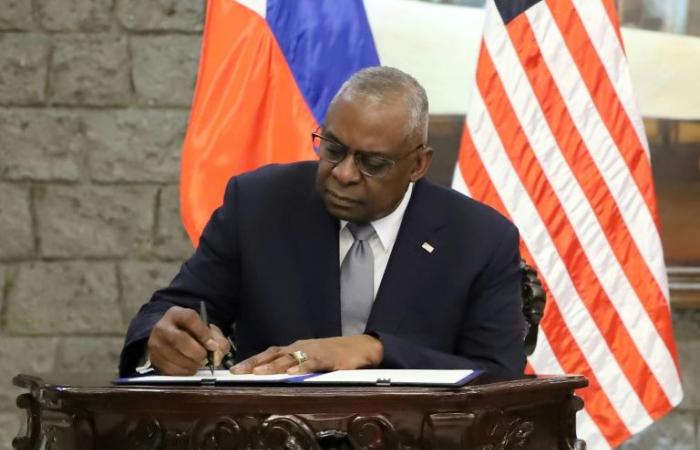Washington justifies sending antipersonnel mines to Ukraine to stop Russian advances
The United States’ decision to supply antipersonnel mines to Ukraine reflects a shift in Russia’s battlefield tactics, with Moscow increasingly favoring infantry, the defense secretary said Wednesday. Lloyd Austin.
“Their mechanized forces are no longer in the lead. They are advancing on foot in a way that they are approaching and doing things to open the way for the mechanized forces,” Mr. Austin told reporters during a visit to Laos, a country long ravaged by this type of weaponry.
The Ukrainians “need things that can help slow down this effort on the part of the Russians,” he added as the advance of Russian troops accelerates in eastern Ukraine.
This turnaround comes a few days after Washington gave the green light to Ukraine to strike on Russian territory with American-made long-range missiles, used in the process by kyiv, a red line for Moscow.
The International Campaign to Ban Landmines (ICBL) immediately denounced a “disastrous” decision on Wednesday. The group, which won the Nobel Peace Prize in 1997, affirmed that it “will strive to get the United States to reverse its decision.”
US President Joe Biden declared in 2022 that he would ban its use, except on the Korean Peninsula, drawing a contrast at the time with Russian tactics in Ukraine.
However, the United States is not a signatory to the UN treaty banning antipersonnel mines.
Mr. Biden’s change of heart comes amid concerns about continued U.S. support for Ukraine once President-elect Donald Trump takes office in January.
The former Republican president assured that he was able to end the war caused by the Russian invasion of Ukraine in February 2022, in “24 hours”.
– “Very different” mines –
According to Mr. Austin, the mines supplied by the United States will be “non-persistent”, that is to say equipped with a self-destruction or self-deactivation device, which would theoretically limit the risks for civilians.
So-called “non-persistent” antipersonnel mines can self-destruct or become inactive after losing their battery charge.
On the defensive, State Department spokesperson Matthew Miller explained that these were “very different” mines from those deployed by Russia.
“The landmines that the Russians have deployed in Ukraine, numbering around two million, will remain a threat for decades.”
In the case of American mines, “the battery will run out (…) a maximum of two weeks after their deployment (…) so that they no longer represent a threat to the civilian population at the end of the conflict” , according to him.
He also argued that Ukraine will have to “clear mines at the end of the conflict” and that American mines are “easy to detect and remove.”
The Biden administration was already criticized last year for providing cluster munitions to Ukraine.
Laos, where Mr. Austin made his remarks, is still recovering from heavy U.S. bombing during the Vietnam War, which ended fifty years ago.
Antipersonnel mines are explosive devices that continue to kill and maim people long after conflicts have ended.
Do you have a real estate project in mind? Yakeey & Médias24 help you make it happen!






